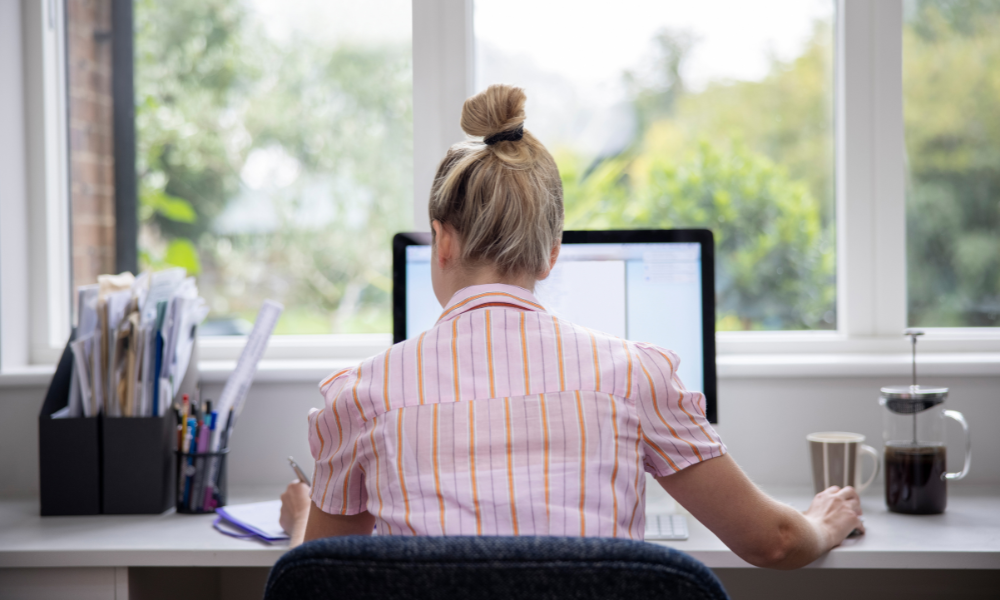
Worker trips, falls while ‘taking authorized paid coffee break’

In a recent decision by the South Australian Employment Tribunal (SAET), employee Lauren Vercoe was awarded workers' compensation for injuries sustained in a fall at her home while working remotely.
The case, Lauren Vercoe v Local Government Association Workers Compensation Scheme [2024] SAET 91, hinged on whether Vercoe’s injuries fell within the provisions of the Return to Work Act 2014 (RTW Act) governing compensable work injuries during an authorized break in a remote work environment.
Auxiliary Deputy President Magistrate Carrel found that Vercoe's fall occurred during an authorized break, and thus her injuries were covered by the RTW Act.
The incident occurred on September 19, 2022, when Vercoe, an employee of the City of Charles Sturt, was working remotely. During a break, she tripped over a metal pet fence she had set up in her home’s sunroom, where she had created a home office. The fence, which was intended to keep a colleague’s puppy away from her own pet rabbit, caused her to fall as she attempted to step over it, resulting in injuries to her right shoulder and knee.
Upon review, the Local Government Association Workers Compensation Scheme initially denied her claim, arguing that her employment was not a "significant contributing cause" of the injury.
The tribunal, however, focused on whether the incident occurred within the scope of her authorized work duties and whether her remote workspace constituted her "place of employment" under the RTW Act.
In analyzing whether Vercoe’s injuries arose from her employment, Magistrate Carrel turned to section 7 of the RTW Act. Section 7(2)(a) of the Act states that physical injuries are compensable if they arise "out of or in the course of employment" and if "employment was a significant contributing cause of the injury." Section 7(5)(b) specifically extends the definition to include injuries sustained at a worker's place of employment during an "authorized break."
The tribunal concluded that because Vercoe was on an authorized coffee break during her work-from-home day, her residence qualified as her "place of employment" for that period. Vercoe testified that her employer, the City of Charles Sturt, encouraged remote work flexibility, and she often worked from home with permission. She also noted that council policies encouraged employees to take regular breaks.
Vercoe provided screenshots from a council video that promoted "taking regular breaks," which the court accepted as evidence of the employer’s awareness of such practices.
Magistrate Carrel stated, “I am satisfied on Ms Vercoe’s evidence that she was taking an authorized paid coffee break," affirming that her actions fell within normal working behavior during authorized breaks, thus meeting the requirements of s 7(5)(b).
To determine whether employment significantly contributed to her injury, Magistrate Carrel cited The State of South Australia v Roberts, noting that “The words ‘the employment was a significant contributing cause of the injury’ require a decision-maker to identify the primary causes of the injury.” In this case, the primary cause of Vercoe’s injury was the pet fence in her sunroom, which she had set up to manage the pets during her remote workday.
The tribunal considered whether Vercoe’s employment had to be aware of or approve the specific hazard, but concluded this was irrelevant. Magistrate Carrel emphasized, “A private residence of a worker may have unique risks not usually found in the employer’s workplace,” adding that the flexible, remote work policy shifted some responsibility for safety to the employee. “The Council had effectively abrogated its responsibilities for the provision and maintenance of a safe working environment when working from home to Ms Vercoe,” the tribunal noted.
The tribunal reviewed the extent and nature of Vercoe’s injuries, including her right humerus fracture, which was uncontested, and her right knee injury, which was less clear. While Vercoe initially believed she had fractured her right kneecap, medical imaging revealed no fracture. The tribunal nonetheless accepted her testimony of immediate pain and injury to the knee during the fall.
Medical experts, including Dr. Dion Suyapto, diagnosed her knee injury as an “aggravation of patellofemoral arthritis.”
While Vercoe argued that her knee pain persisted long after the fall, the tribunal questioned the ongoing nature of the injury. Magistrate Carrel concluded that “the right knee injury, in addition to the right humerus fracture, arises from her employment” but determined it was “temporary” and did not extend beyond September 29, 2022.
During testimony, Vercoe's memory of past injuries and medical history was inconsistent. The tribunal noted her difficulty recalling details about previous knee issues and the circumstances of her prior shoulder injuries. Nonetheless, Carrel found that these inconsistencies were not attempts to deceive but were likely due to pain and the “use of strong pain-relieving medication.”
Magistrate Carrel concluded, “I reject the respondent’s proposition that Ms Vercoe was deliberately exaggerating her evidence or had a lack of memory convenient when it suited.”
In finding that Vercoe’s fall met the conditions set forth under section 7 of the RTW Act, the tribunal awarded her workers’ compensation for her injuries.
The tribunal’s decision reinforces that employers with remote work policies must consider work-from-home environments as extensions of traditional workplaces, potentially liable for injuries during authorized breaks.
The SAET will determine the compensation owed to Vercoe in alignment with these findings.